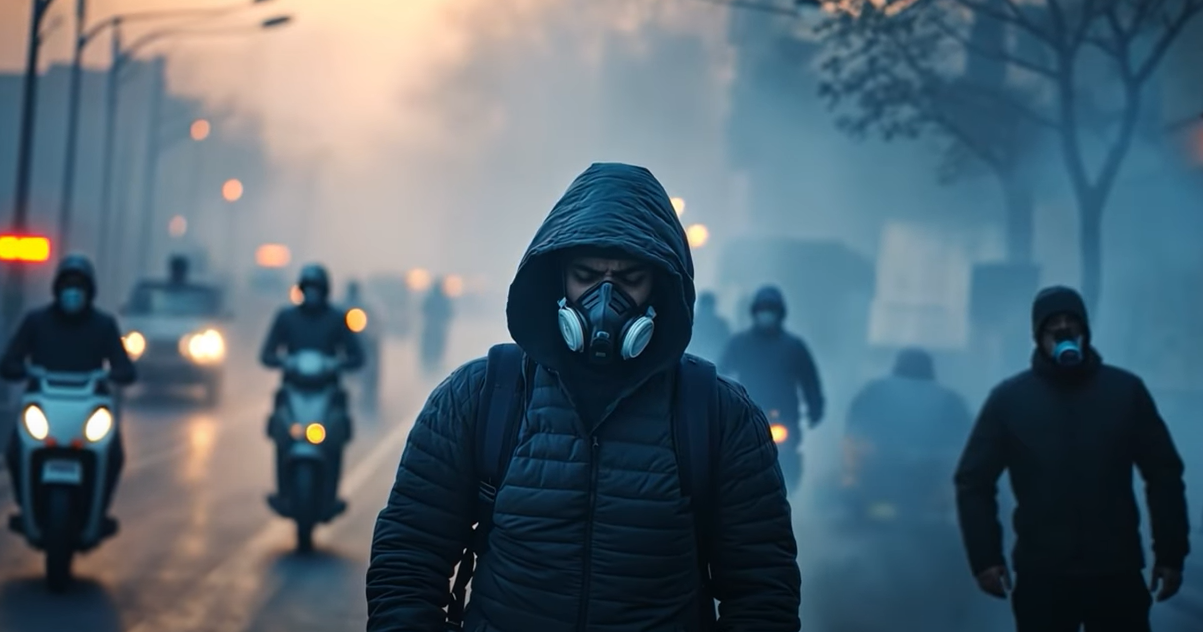
India Needs a NEW CAPITAL: The Pollution Crisis in Delhi

Delhi has become the most polluted city in the world, which is a shame for a country that is overall progressing and moving forward. With people in the capital having difficulty breathing, which is a basic human need, it is time to question whether we are on the right track. The Air Quality Index (AQI) in Delhi often hovers around 350-400, which is worrying. The damage to the lungs from being outdoors in Delhi is equivalent to smoking 50 cigarettes. This pollution not only affects health but also reduces life expectancy, with estimates suggesting that an average person living in Delhi may lose seven to ten years of life. The issue of pollution is not new; it has been an ongoing crisis for more than a decade.
The Long-Standing Pollution Problem in Delhi
Despite numerous discussions about rising pollution levels, especially during winters, no political party or state has effectively addressed the issue as a united country. There are many causes of pollution – from stubble burning to transport issues. Some say the influx of trucks contributes to pollution, while others point to the increased use of private vehicles. Environmentalists argue that unless significant action is taken, Delhi’s geography naturally traps pollutants.
Sadly, the reality is that Delhi has become a source of embarrassment. As a Delhi native, I cherish many aspects of the city, including its food and beautiful sights. However, I love India more than Delhi. The state of our capital, with its polluted rivers and toxic air, raises serious questions about public safety and health. If we continue to allow such situations, India’s global image as an emerging power is at stake.
Imagine a foreigner visiting Delhi for the first time. Pollution and the condition of the river will undoubtedly affect their perception of doing business in India. If China can significantly improve its air quality, why can’t we? There is a huge difference in governmental approach between the two countries and India, being a democracy, faces many challenges which need time to be resolved.
Comparative Analysis with China
Ten years ago, Chinese President Xi Jinping acknowledged air pollution in Beijing as a major problem. Following this admission, China invested $270 billion over several years in a comprehensive program aimed at improving air quality. They closed and relocated factories, installed pollution control equipment, and made significant changes to transportation, including the widespread adoption of electric vehicles.
In contrast, India lacks the financial surplus to implement such drastic measures overnight. Even after investing $270 billion, it took China several years to see improvements. The prospects of Delhi’s air quality improving in the near future appear bleak. Several politicians, including Shashi Tharoor, have recently suggested that it is time to consider moving the capital out of Delhi.
The Need for Diversification
Delhi’s air quality is so poor that it hinders focus on other critical infrastructure development. If we continue to retain Delhi as the sole capital, we risk jeopardizing India’s global reputation. The health implications on our citizens are serious, and it is important to consider alternatives. While other cities like Gurgaon and Ghaziabad also suffer from poor air quality, there are potential candidates like Chennai and Hyderabad that could serve as new capitals.
Shifting a capital is no easy task. For example, Indonesia is shifting its capital from Jakarta to Borneo, which requires an investment of $35-40 billion. If a country like Indonesia has to incur such costs, it is fair to assume that shifting India’s capital would require a budget of around $70-80 billion. This would include setting up a new Parliament, a Supreme Court, and other necessary government infrastructure.
Challenges of Relocation
Moving the capital poses significant challenges. It is important to ensure that the new capital has good air quality. Unfortunately, many major cities in India have poor air quality. Even Chandigarh, which is a planned city, is not much better than Delhi.
While it is easy to suggest moving the capital, the reality is that we need to look for dynamic solutions. Countries such as Malaysia and the Netherlands have multiple capitals, which shows that a diverse approach can take some of the pressure off Delhi.
Perhaps India should consider moving foreign embassies and judicial functions to a new city while keeping Parliament in Delhi. This approach would allow us to take immediate action without completely uprooting the capital.
Financial Considerations and Long-Term Solutions
While it is not possible to completely shift the capital immediately, we should create a fund to tackle pollution in Delhi. A budget of between $5 and $10 billion can help mitigate some of the air pollution challenges, even if it does not match the scale of China’s $270 billion investment.
The pollution problem in Delhi is not going to end soon. It will take years to solve. We have enough time to debate and discuss long-term solutions. At the moment, I love Delhi, but I cannot support it being the capital of India. What do you think? Do you agree with politicians like Shashi Tharoor that it is time to look beyond Delhi as the capital? If yes, which city do you think is a suitable new capital for India?
Conclusion: The Path Forward
Ultimately, the conversation about moving India’s capital is not just about geography; it is about the health and well-being of its citizens. As we consider this change, we must also look for options to improve air quality in Delhi through targeted interventions, investments, and policies. The issues we face are complex, but with dedicated effort and innovative solutions, we can pave the way to a healthier, more sustainable future for our capital and the country.
USA Will Arrest Gautam Adani: Understanding the Allegations and Implications
GooglsNews.com Click me







